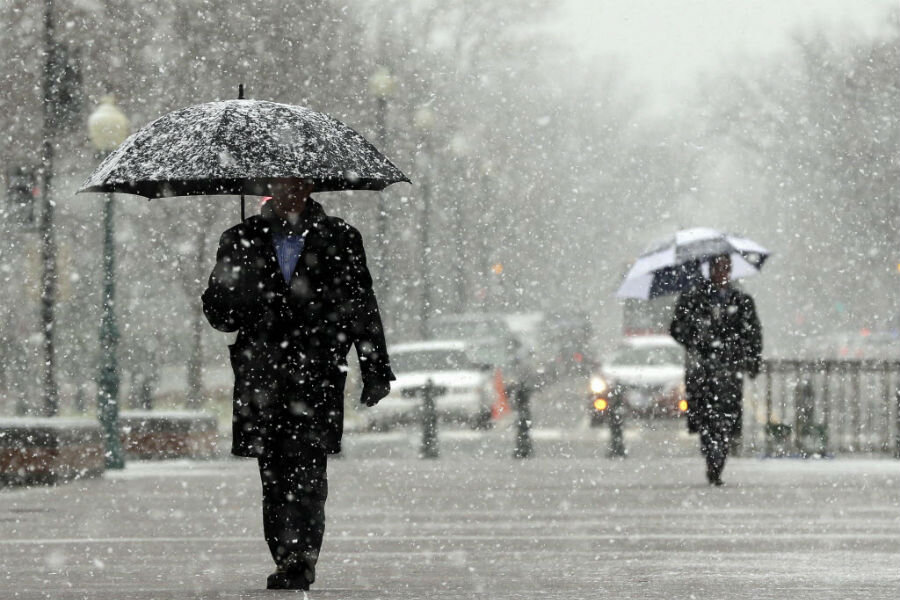Winter forecast: Mild temperatures in store for much of nation
Loading...
Last winter thousands of Americans huddled in their homes and flinched at their utility bills as the polar vortex helped produce one of the coldest and most expensive winters on record in the United States.
Such a hand-numbing and character-building winter is unlikely to repeat itself this year, according to the National Oceanic and Atmospheric Administration's winter forecast, released Thursday. However this winter could still pose a different challenge.
California and much of the Southwest have been in the grips of a severe drought since 2012. The region has traditionally relied on winter precipitation, be it rain or snow, to replenish its reservoirs for the rest of the year. That snowpack has been dwindling in recent years, along with reservoir water, and it doesn't look like this winter will bring the state any reprieve.
Temperature outlooks are usually the aspects of winter forecasts people pay most attention too, said Mike Halpert, acting director of NOAA's Climate Prediction Center. But the severe drought in California "elevates the importance of precipitation this winter," Mr. Halpert said during a conference call with reporters this morning."Winter is the wet time of year in California so this is when they need to see their rainfall," Halpert added.
California is nearing the end of its driest three-year period on record, and 2014 could be the warmest year in the state's history, according to NOAA.
There is a 2 in 3 chance that winter precipitation is near or above average in California, Halpert said, but that still may not be enough to break the drought. Kevin Werner, NOAA's western regional climate services director, told reporters the state would need "significantly above-average precipitation" this winter to improve the drought situation.
Last winter was similarly dry, with average snowpack across the state 31 percent of normal on April 1, Mr. Werner said. The average runoff volume of major rivers in California also ranged from 10 to 50 percent of average over the year, and on Aug. 31, 154 of the largest reservoirs in the state held 113 million acre feet of water, 36 percent of their total capacity.
"If precipitation continues to be low the situation is unlikely to change, even if they get average precipitation," Werner said during the conference call.
The dry summer has also impacted California's groundwater supply, which has become "severely depleted," according to Werner.
"It's a diminishing resource the state can rely on for augmenting their water supply," Werner added.
There is the possibility that a strong El Nino event later on in the winter could bring more precipitation to the US West Coast, but right now he El Nino signal is weak, Halpert said. NOAA says there's a 67 percent chance of an El Nino developing before the end of the year but says that this year's event "is expected to be weak, offering little help" to California.
One positive takeaway from this year's winter outlook is that the frigid temperatures that gripped much of the country last winter is unlikely to return. Last winter the US midwest was in the path of a tunnel of freezing Arctic air that brought record temperature lows to the region for months. The sudden temperature extremes also resulted in a spike in electricity costs, making last winter one of the coldest and most expensive on record.
But Halpert said that a return of the Arctic winds is "just not particularly likely" this year.
"Last winter we obviously saw a very recurrent pattern with cold air outbreaks," Halpert said. "So far there's nothing that indicates we'll see a repeat of that."
"We expect at some point in the winter we'll see some cold air enter country," he added. "The likelihood we see it as persistent as we saw it last winter I'd say is very low."
AccuWeather.com forecaster Paul Pastelok said in a press release Wednesday that gusts of Arctic air will surge into the Northeast this winter, but probably not until January and February.
"It’s not going to be the same type of situation as we saw last year, not as persistent," Mr. Pastelok added.








